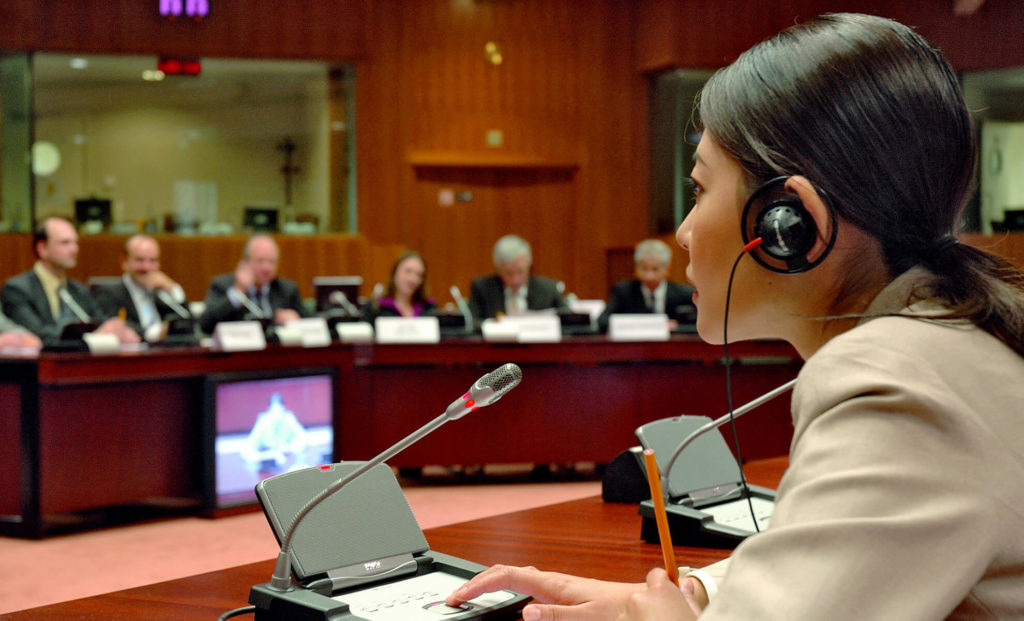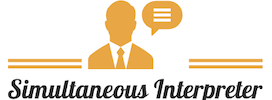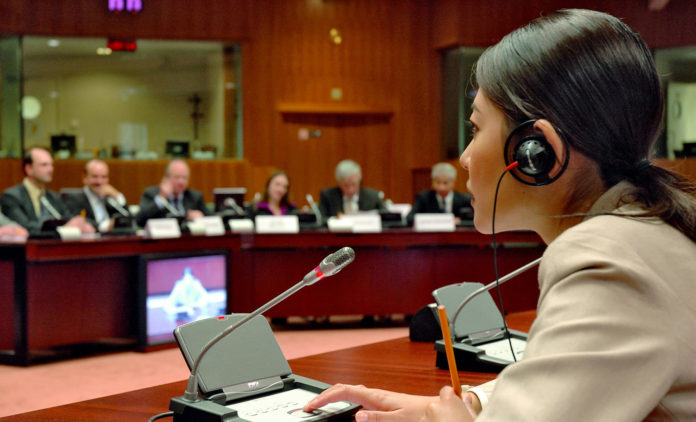Considering how complex and challenging professional simultaneous interpretation is, this is not a “learn it at home” profession. To be fair, some simultaneous interpreters trained themselves and acquired the skill “on the battlefield”, but it was in the early days of the profession, in 1950s and 60s.
Nowadays, formal post graduate education in conference interpretation is virtually mandatory.

Let us, first of all, see what types of skills and knowledge any serious simultaneous interpreter needs to have. To name just a few:
Interpreter’s working skill:
- excellent knowledge of all your working languages;
- knowledge of cultures, customs, traditions, history, current events, and daily life in all the countries where all your languages are spoken (including knowledge of slang and dialects);
- ability to switch quickly between languages, to find an appropriate word or expression in another language instantly;
- therefore, quick thinking, always being “on your toes”, ability to concentrate for extended periods of time, process a lot of information, physical and mental stamina;
- cultural sensitivity, and awareness, that other peoples and cultures may handle particular situations in a completely different ways; communication and diplomatic skills, qualities of a cross cultural consultant;
- ability not to add anything to the situation of communication, but to “blend in”, be an invisible conduit during communication by other people. A good exercise in humility! As they say in our business, “only bad interpreters are noticed”, good ones are “invisible”, but are always there when needed. The best ones create the impression that you are communicating with your counterpart directly.
- very strong skills in both consecutive and simultaneous interpretation. Because they are skills and acquired practically, at least 10,000 hours of practice are needed for each of the modes of interpretation to really master it. As with any skill, practice makes perfect!
- working knowledge of many common topics and areas of expertise. By “working knowledge” we do not mean being able to give a lecture, but to be able to interpret, when an expert in this field is giving a lecture. Most common topics include: politics, science and technology (with all its multiple subtopics: chemistry, physics, aerospace etc.), economics, government, education, law, etc. And all that in all your working languages. it means that interpreters store quite a lot of technical terminology in their brains: one source argues that professional translators and interpreters tend to have an active vocabulary of 20,000 – 30,000 words and a passive vocabulary of 150,000+ words. Quite possible, considering many know more than 2 working languages!
Because the profession is skill based, constant supervision by an experienced trainer is a mandatory requirement during the process of interpreter education. It is somewhat similar to ballet classes, when your posture, breathing, movements are gently but constantly corrected, until they become your “second nature.”
The trainer also has to be a practicing simultaneous interpreter: an “armchair” interpretation teacher is an oxymoron.
The student integrates and internalizes the knowledge, picks up traits and interpretation skills of the teacher and, eventually, develops his or her own unique style of interpretation, based on the tradition of a particular school.
As we said before, this can be the result of only long and arduous training, of a lot of “soul searching”. Many do not make it, and the number of reliable experienced conference interpreters is relatively limited, because it is such a difficult skill to learn.





















